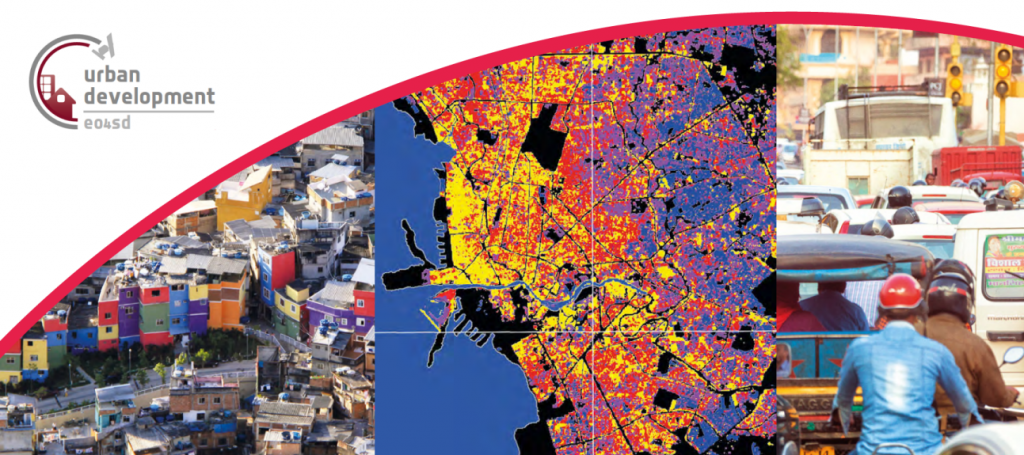Posted on November 10, 2016 by Mariangela
Overview: Urban Development
EO4SD – Urban Development aims at demonstrating the benefits of EO-based geo-information products and services to support urban planning tasks in the context of programs related to the IFIs and stakeholders in Client States.
MAIN PARTNERS
World Bank (WB); Asian Development Bank (ADB); Inter-American Development Bank (IADB)
MAIN THEMATIC COMPONENTS AND EO-BASED INFORMATION
Primary products
›› Urban extent
›› Urban and peri-urban land use/land cover
›› Building footprints, available right-of-way, façade-to-façade space, etc.
›› Building inventories (residential, industrial, commercial, public, etc.)
›› Transport infrastructure inventories
›› Waste site inventories (illicit/legal)
›› Inventories of other important man-made features, evident property boundaries, etc.
›› Extent of informal settlements/slums
›› Type of informal settlements/slums
›› Ecosystem status of peri-urban areas
›› Inventories of urban green areas (related to surface imperviousness/soil sealing)
›› Population distribution and density (either disaggregated census or building block estimates)
Secondary products
›› Past and present air quality: tropospheric NO2, SO2, O3
›› Past and present air quality and the effects of long-range transport of smoke, dust and sand: optical depth (aerosol
thickness) for PM10, PM5 and/or PM2.5
›› Past and present urban thermography (Urban Heat Islands and related urban public health effects)
›› Elevation products, building heights, 3D city models
›› Flood history, flood risk, and associated infrastructure exposure
›› Inventories of landslides, landslide/geotechnical risk, and associated infrastructure exposure
›› Past and present urban terrain/infrastructure motion (displacement) due to water extraction, mining, etc., and associated infrastructure exposure.
PRELIMINARY LIST OF CANDIDATE URBAN AREAS
›› At least 40 cities
›› Emphasis on low-capacity environments (low- and lower-middle-income developing countries)
›› Selected megacities and their hinterlands
›› Secondary (emerging) cities, generally between approx. 300,000 and 3 million in population, smaller in smaller countries
MAIN DEVELOPMENT PROGRAMS AND INITIATIVES
›› World Bank national initiatives on urban and slum upgrading, urbanisation reviews, etc.
›› ADB Future Cities Programme
›› ADB Cities Development Initiative for Asia
›› IADB Emerging and Sustainable Cities Initiative
›› GEF Global Platform for Sustainable Cities
›› Other regional and country-level programs to be decided in Phase I

